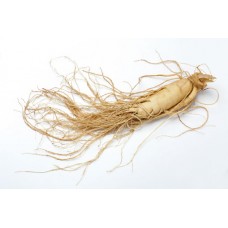Shopping Cart
0 item(s) - $0.00Ginseng | Ren Shen | What does it really do for you? | 人参它对你有什么真正的作用?
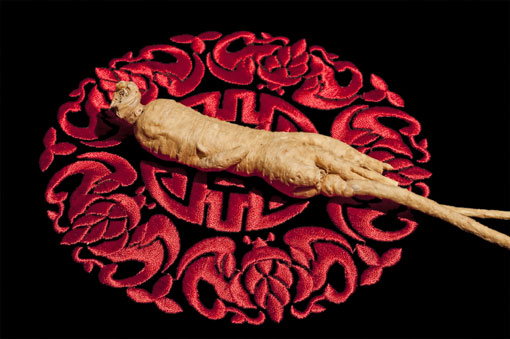
Ginseng — the Emperor of Tonic Herbs
What All Ginseng Users Need To Know
Throughout the histories of both Eastern and Western Herbology, never has there been a plant held in higher esteem or assigned greater monetary value than the herb Ginseng. In ancient China, Ren Shen (the Chinese name for Ginseng) was so highly regarded that wild Ginseng roots were considered more valuable than gold. In fact, due to the exorbitant prices that the highly prized herb commanded, more often its use was limited to noblemen, Emperors, and residents of the Imperial Court. These members of the Chinese elite only consumed Ginseng of the highest quality in their effort to maintain the stamina that was needed to practice the martial arts, increase longevity, and service their numerous concubines.
Due to stringent environmental conditions and a minimal seven years that is required for maturation, it was fairly common for Ginseng to be in short supply and armed conflict could not be ruled out in an effort to procure the much sought after perennial herb. In modern times, the use of Ginseng by Asian military groups such as the Vietnamese and Chinese armies to strengthen and extend the endurance of their troops not only increased Ginsengs value, it further increased it’s already legendary reputation.
According to historians, although Ginseng has been used in China as far back 2000-3000 B.C.; written records describing its pharmacological actions did not appear until approximately 200 B.C., with the publication of Emperor Shen Nong’s herbal classic Ben Cao Jing.
Even though Ginseng’s reputation was well-established throughout China and other parts of Asia, it was virtually unheard of in the West until the late seventeenth century when it was first introduced by Jesuit priests who learned about the legendary herb during their missionary effort to spread Christianity throughout China.
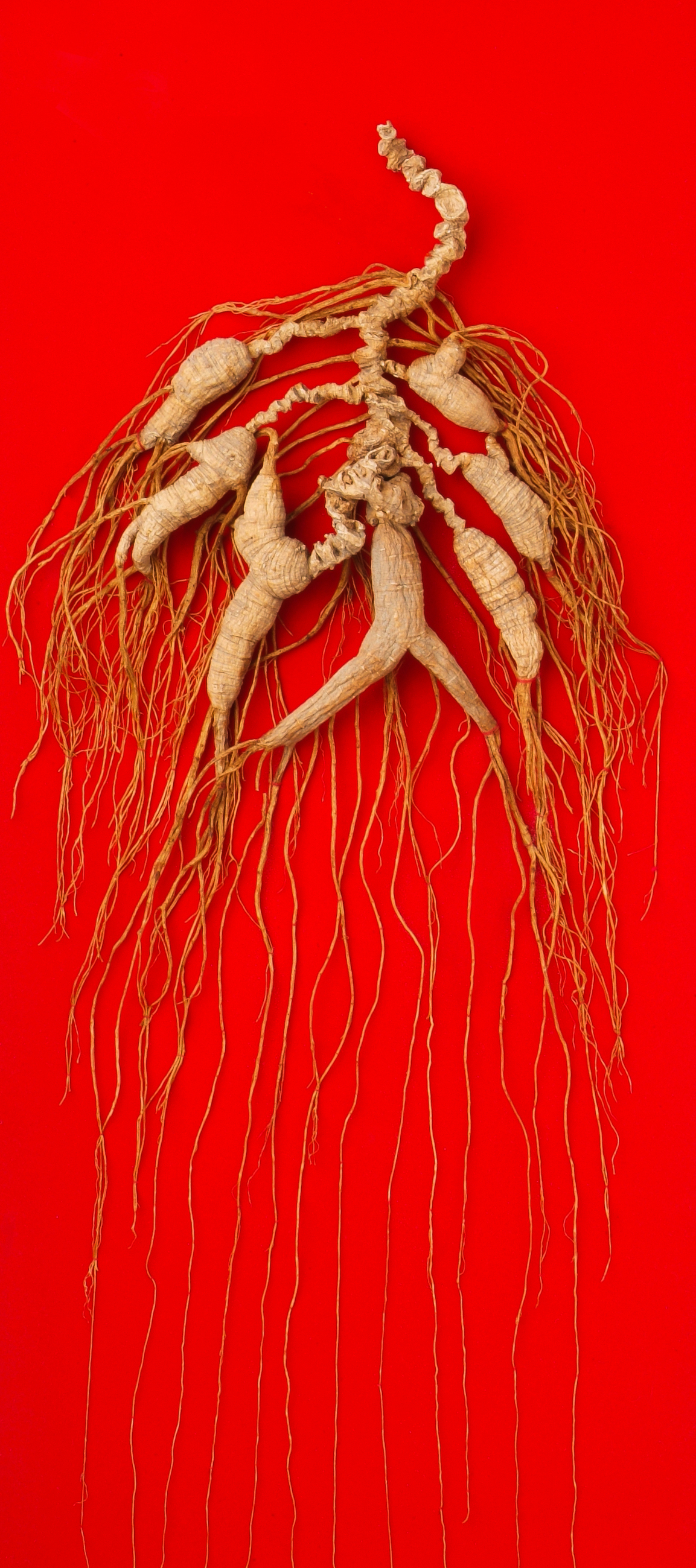 As reports about the herbal panaceas curative abilities spread among non-Asians, Ginsengs popularity steadily increased. Unfortunately, due to over cropping, deforestation and encroachment, dwindling supplies of wild Ginseng fell short of Western demands. As a consequence, not unlike the situation in Imperial China – the high price of the coveted root made it unaffordable for all except those of substantial means. It was not until 1949 following the Chinese revolution that China’s Chairman Mao Tse Tung declared Ginseng a national treasure and encouraged its cultivation for commercial use. That proclamation was the cornerstone to establishing China’s lucrative Ginseng industry.
As reports about the herbal panaceas curative abilities spread among non-Asians, Ginsengs popularity steadily increased. Unfortunately, due to over cropping, deforestation and encroachment, dwindling supplies of wild Ginseng fell short of Western demands. As a consequence, not unlike the situation in Imperial China – the high price of the coveted root made it unaffordable for all except those of substantial means. It was not until 1949 following the Chinese revolution that China’s Chairman Mao Tse Tung declared Ginseng a national treasure and encouraged its cultivation for commercial use. That proclamation was the cornerstone to establishing China’s lucrative Ginseng industry.
Today Ginseng is one of China’s most important export items. Unlike in centuries past, agricultural advancements and widespread cultivation has not only made it readily available for Western importers, commercial production of the highly prized herb has also made it plentiful enough to satisfy the demands of the estimated 40-60% of the adult population of China who according to recent statistics, use it in one form or another on a regular basis.
The two main sources for Asian Ginseng are Hong Kong and Seoul Korea. Hong Kong has been the main distribution point for exporting Chinese Ginseng to the rest of the world for more than half a century, while its Korean counterpart, Seoul is the central marketplace for billions of dollars of Korean Ginseng that is primarily grown for exportation to Western markets.
Enormous sums of money have been spent on Ginseng since it became available here in the West more than sixty years ago. However, due to their longer history of using the celebrated herb, Asian consumers are far more knowledgeable than their Western counterparts when it comes to the finer points of the Ginseng trade. This lack of insight into quality issues such as age, origin, whether it is cultivated or grown wild, etc. are the primary reasons that the famed root has fallen short of the expectations of a large percentage of Westerners who have tried the highly touted herb, and is without a doubt the greatest deterrent to Western users experiencing the powerful effects that Ginseng is famous for.
The basic guidelines that follow should make a significant difference in one’s ability to procure the high quality roots that have made Ginseng so famous. We are convinced that it is the “missing link” that will assist all true seekers in their search for the magical root and put to rest any doubt about Ginsengs efficacy and demonstrate once and for all why it has inspired widespread use by Asians for thousands of years and is rightfully considered the Emperor of all tonic herbs!
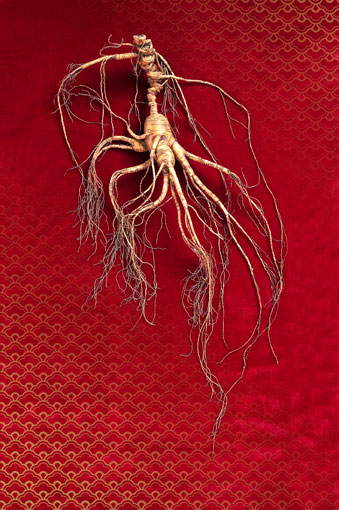
Consumer Guidelines for Choosing Cultivated Ginseng
- After trying Ginseng in a variety of different forms such as tinctures, teas, capsules and powder, we have discovered that in an effort to increase profit many manufacturers dilute or otherwise adulterate their product with powder “fillers” or by using Ginseng of inferior quality. Therefore, we strongly recommend that you only use the raw Ginseng root. The first thing you need to know is the source of the root, or where it was grown. North Korean Ginseng, which is somewhat scarce and quite expensive, is considered some of the best. This is followed by South Korean Red Ginseng which can also be somewhat expensive, but as quality declines becomes more affordable. Then there is Chinese Kirin, which is readily available and cheaper but less potent than Korean Ginseng. And finally American Ginseng, which is normally cheaper and less stimulating than Asian Ginseng. The next consideration is the age of the root. Try to purchase Ginseng that is at least seven years old (the older the better). The minimal acceptable age is six years old. Anything younger than that means the plant was not allowed to mature, and it is highly unlikely that it will produce the effects that Ginseng is famous for. Although it is fairly common to find cultivated Ginseng being sold by the individual root, for both practical and financial reasons, savvy Ginseng consumers typically purchase Ginseng in a metal container called a “catty.” A catty (also known as a Chinese pound) is actually 1 lb. 3 oz. and inside the catty is a sealed container of Ginseng. If the seal has been broken, it is advisable to not purchase it.
- All cultivated Korean Ginseng is assigned one of three grades that are a measure of the roots quality. The three grades are: Heaven (1st or highest grade), Earth (2nd best, but still excellent) and Good (3rd).
- Korean Ginseng has a simple numbering system used to indicate the size of the root
- #10 (finest)
- #15 (large)
- #20 (big)
- #30 (good size)
- #40 (medium size to small)
According to the standards outlined, the most desirable cultivated Ginseng would be Korean Heaven’s grade #10 that is a minimal seven years old.
Finally, authenticity is always an issue for anyone purchasing Ginseng. Due to the high price of the higher quality Ginseng counterfeiting and deception is rampant, and all too often there is misrepresentation of Ginseng’s quality to the uninformed consumer. Our advice is to always purchase the highest quality Ginseng that you can afford, while keeping in mind the Latin phrase Caveat Emptor… Let the Buyer Beware!
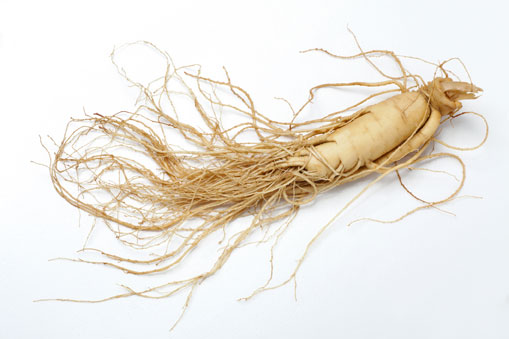
Consumer Guidelines for Choosing Wild Ginseng
A shy plant that tends to grow underneath taller plants, wild Ginseng grows in deep shaded forests and hillsides of northeastern China and in the United States. Ginseng grown in these natural surroundings — free of any agricultural intervention — is more potent and chemically balanced than cultivated Ginseng, and considerably more expensive. The scientific explanation for the phenomenal disparity in potency between wild and cultivated Ginseng roots is that roots, which have experienced hardship created by natural environmental stresses, produce more adaptive constituents that increase the plants potency. Important points to consider before purchasing wild Ginseng are:
- Unlike cultivated roots, wild Ginseng is usually sold by individual roots rather than by the pound or catty. The effects of authentic wild Chinese Ginseng are no less than incredible.
- One of the most important points for determining authenticity and potency of wild plants are the rootlets, or what the Chinese refer to as “the beard.” This “beard” which is attached and branches off from the main body of the plant contains high levels of ginsenosides and germanium that are critical to the efficacy of the plant.
- A time-tested method for determining legitimacy is that every inch or so along the rootlets there should be small nodules that feel like little pearls. In the absence of the all-important rootlet and nodules authenticity is questionable, and it is extremely unlikely that the Ginseng is in fact wild Ginseng.
- Another thing that should be carefully examined is the head of the Ginseng root, which can provide a great deal of information about the roots history. It is supposedly, the number of notches on the head that provides information about the age of the root. This is probably true to a degree, but is somewhat inexact and is therefore not a perfect gage. However, the number of notches is a good approximation. Therefore, the more notches the better. Heads with more than twenty notches are premium, and more than forty notches will definitely produce effects that are the basis for the legends that surround this incredible tonic herb.
Preparing Ginseng
After purchasing the raw Ginseng root you have two options. You may either make a medicinal wine, which is the preferred method for many Ginseng connoisseurs, or a decoction. Detailed instructions for making medicinal wine may be found by clicking on methods of preparation. For those of you who prefer decocting their Ginseng, we strongly recommend you consider using what is known as a “Ginseng cooker.”
Ginseng cookers are a way of preparing Ginseng tea that conserves the subtle properties of the root. This traditional method involves the use of a double boiler, which is known to produce a more robust, full- bodied and potent brew. When Ginseng is prepared in this manner, many of the essential nutrients of the Ginseng, which normally dissipate in steam, are preserved. An added benefit of this method is that because the tea remains below the boiling point, photo-nutrients are retained that would otherwise be lost by boiling. Detailed instructions for preparing Ginseng in a Ginseng cooker can be found by clicking on methods of preparation.
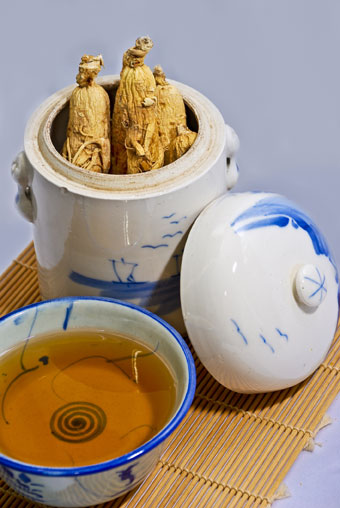
Using a Ginseng Cooker
Place the Ginseng inside the Ginseng cooker and pour in several cups of water, using enough water to reach the bottom of the line inside the cooker. Put the lid on the cooker, and place it into a larger pan of water. The water level in the outer pan should reach the bottom of the handles on the ginseng cooker. Turn on the burner and bring the water in the pan to a boil. Turn down the heat under the pan, and let the water simmer until half the water has cooked away. Fill the outer pan up again to the bottom of the cooker’s handles, and bring to a boil. After the water comes to a boil, lower the heat and simmer. This process is repeated over and over again, for as long as you want to cook your Ginseng.
How long should you Cook Ginseng?
At the very least 90 minutes, and most people cook it for about 3 hours. There are others who believe in cooking it until the Ginseng breaks apart, which can take as much as 18-24 hours, producing a strong, thick, and potent brew. After completion of this cooking process, traditionally the Ginseng root is consumed – as well as the remaining liquid (or Ginseng tea).
What Ginseng do we offer?
We offer you the choice of several excellent varieties of Ren Shen from medium to high quality levels; this next area allows you to choose one that best fits your needs. If you have questions, feel free to call us or send an email. We’d like to make your shopping experience as easy as possible.
The prices on the ginseng market are as volatile as the sea, meaning they constantly ebb and flow. You’ll probably notice the prices continually fluctuate. It is advisable prior to purchasing to check with us to be sure the prices listed below have not changed.
Korean Ginseng (these carry the Official Korean Government seal)
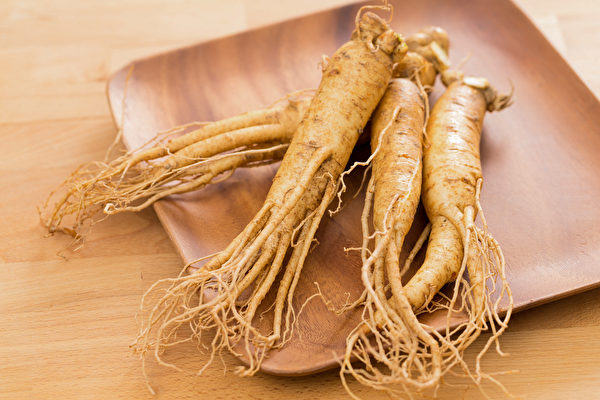
This is the real deal folks, it’s the highest quality, it’s extremely powerful and effective, and all are grown 8 years or longer. These roots were grown by the Korean Government, and they all carry the Korean Government’s seal of approval. The bad news is these roots are so expensive most can only dream of using them. The price on the below three items constantly fluctuates, please check with us before purchase to confirm the currently listed price is still available. The following Korean Ginseng that carry the official government seal are sold on this website, click the below link(s) for more information or to purchase.
Korean Ginseng Wild, sold by the root
Korean Ginseng Loose Root
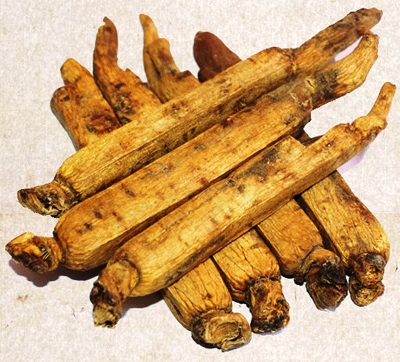
Our Korean Red Ginseng Root is part of the Panax species of ginseng and these roots are high-quality eight+ years old. We purchase this ginseng in bulk from the Korean Government, while it does not carry the official government seal, it is of the highest quality and reasonably priced. We suggest you sample this product first to confirm its ability to boost the immune system, energy levels and vitality. To make sampling this loose root ginseng possible we sell two samples to choose from — either 5 pieces or 10 pieces — both are Korean Heaven Grade # 10 ginseng. All of the Korean Ginseng products listed below are sold on our website;click the red links for more information or to purchase.
Korean Ginseng (non-Government seal)
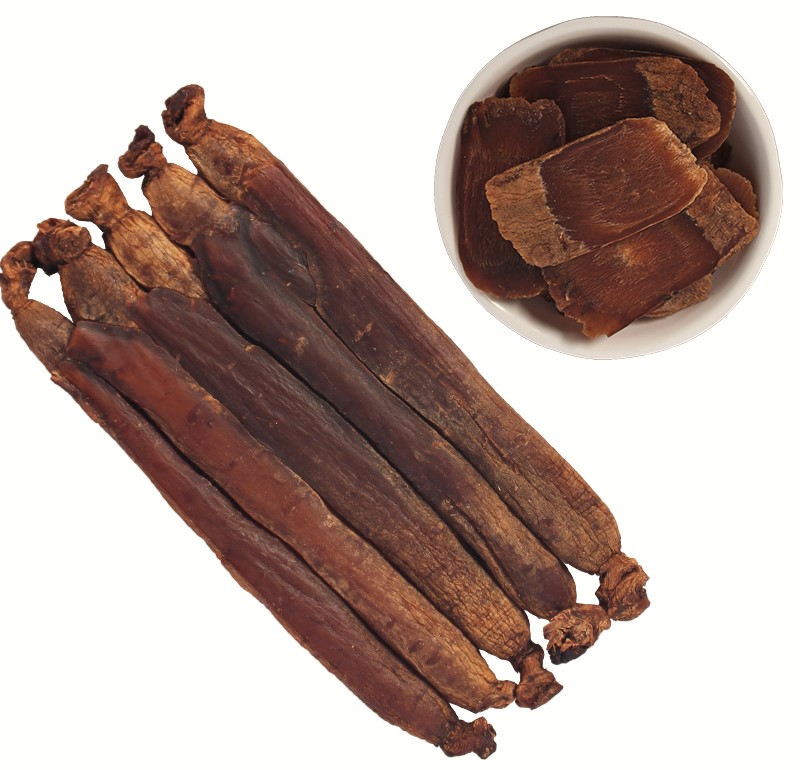
These Korean Red Ginseng Roots are economically priced and a good entry level ginseng. These roots come from a reputable Hong Kong based distributor; and while it does not carry the Korean official government seal it is of good quality and reasonably priced. We offer high-quality eight-year whole roots; click the red links listed below for more information or to purchase.
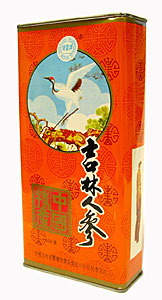
Chinese Jilin
Jilin aka: Kirin Ginseng is the most sought after ginseng in all of China. It is renowned throughout Asia as one of the best Chinese Ginseng Roots. We offer high-quality eight-year whole roots sold in a catty can; click the red link listed below for more information or to purchase.
Chinese Jilin Ginseng graded Good
Aka: Xi Yang Shen. Traditional Chinese medicine classifies American Ginseng as yin, which is cooling, soothing and restoring. It is ideal for those who are very active and lead stressed lives. We offer high-quality eight-year whole roots sold by half or full pound; click the red link listed below for more information or to purchase.
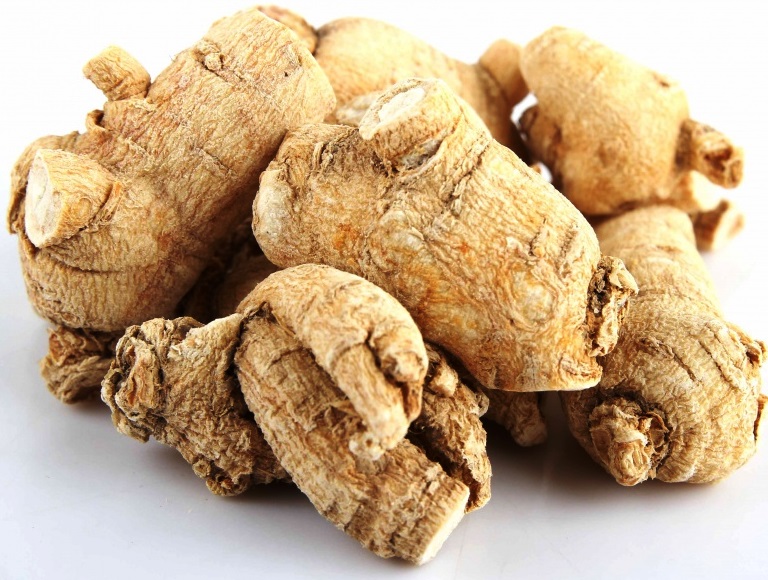
American Ginseng Roots
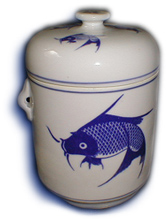
Ginseng Cooker
To experience the full-effect of ginseng we suggest preparing it in the traditional way using a porcelain ginseng cooker. Use this ceramic cooker as the main vessel, place it in a double-boiler and produce a more robust, full bodied, potent brew. We will provide easy to follow step-by-step cooking instructions. And, we have easy to follows processing instructions on this website click to read. Anyone who uses ginseng owes it to himself or herself to check-out this ginseng cooker. We stock two different cookers, a 5-cup and 10-cup capacity; click the below links for more information or to purchase.
10-cup capacity ginseng cooker
Note: Traditionally speaking, ginseng connoisseurs do not powder their roots, preferring to see and touch the roots so that they may rate its quality. However, if you wish us to powder the roots for you, please check the appropriate box at check-out and there will be a $10.00 powdering fee applied.
Write a review
Your Name:Your Review: Note: HTML is not translated!
Rating: Bad Good
Enter the code in the box below:

All Rights Reserved | © Sea of Chi 2026 | Web Design Company - DreamCo Design
The statements made have not been evaluated by FDA. Our products are not intended to diagnose, treat, cure or prevent any disease.



